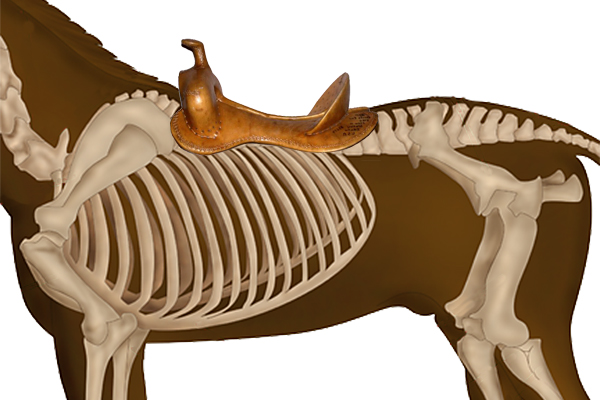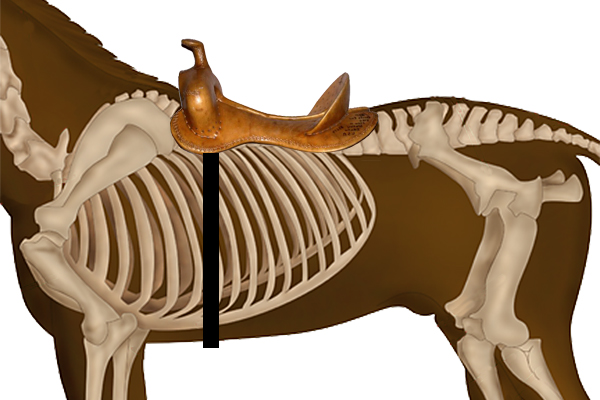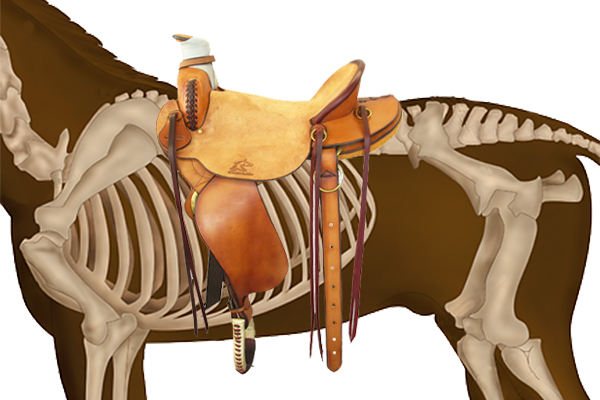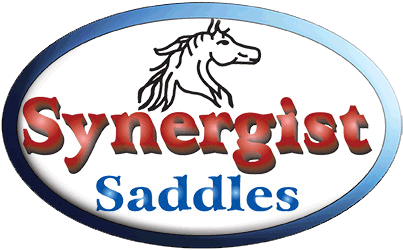 The proper saddle position for a western saddle tree is designed to fit right behind the shoulder blades of the horse. Some horses have a pocket of sorts formed where the back of the shoulder blade rolls down to the rib cage. Wider mutton withered horses have very little definition in this area. The shape of the tree should match the shape of the horse’s rib cage when it is sitting in the proper place. If the shapes don’t match you end up with pressure points and areas that have little or no contact at all. What this means is that a properly designed tree and saddle can sore your horse if the rider uses tack to hold a saddle in the wrong position.
The proper saddle position for a western saddle tree is designed to fit right behind the shoulder blades of the horse. Some horses have a pocket of sorts formed where the back of the shoulder blade rolls down to the rib cage. Wider mutton withered horses have very little definition in this area. The shape of the tree should match the shape of the horse’s rib cage when it is sitting in the proper place. If the shapes don’t match you end up with pressure points and areas that have little or no contact at all. What this means is that a properly designed tree and saddle can sore your horse if the rider uses tack to hold a saddle in the wrong position.
 A common myth in the horse world is that rigging should hang straight down to the cinch with the cinch a hand behind the elbow. In order to get that alignment they will position the saddle too far forwards on the shoulder blade. Within a couple of minutes in motion the saddle slips back to where it has been shaped to fit. So then the rider goes and adds a breast collar to keep it from sliding back. This is a total recipe for disaster as far as your horse’s back is concerned.
A common myth in the horse world is that rigging should hang straight down to the cinch with the cinch a hand behind the elbow. In order to get that alignment they will position the saddle too far forwards on the shoulder blade. Within a couple of minutes in motion the saddle slips back to where it has been shaped to fit. So then the rider goes and adds a breast collar to keep it from sliding back. This is a total recipe for disaster as far as your horse’s back is concerned.
If the tree is held forward on the shoulder blade, the muscles that cover it are compressed causing high pressure and because the saddle is raised up in the front by being on the shoulder blade it opens up space in the middle causing the saddle to bridge. (Bridging is caused when you have contact in the front and back of the saddle but none in the middle). Over time muscles can atrophy and damage to tissue can cause chronic back issues. When the saddle is held over the shoulder blades it also raises the front of the saddle rocking the rider back in the seat and making it very hard for the rider to find his balance in the seat.
The neat thing is if your saddle fits your horse’s back properly, even if you put the saddle a little too far forward or back, it will move to the proper saddle position (as long as you haven’t cranked down on a breast collar to keep it forward). However, a saddle that doesn’t match the horse’s back properly is going to move to the place of least resistance which may not be the proper spot.
 Looks can be deceiving. Because western saddle skirts are usually an inch or two longer than the bars it might look like the saddle is too far forwards but the tree is sitting behind the shoulder blade. Also, the skirting should follow the natural curve of the front and back of the tree so as to not dig in.
Looks can be deceiving. Because western saddle skirts are usually an inch or two longer than the bars it might look like the saddle is too far forwards but the tree is sitting behind the shoulder blade. Also, the skirting should follow the natural curve of the front and back of the tree so as to not dig in.
So, where the saddle sits on the horse is determined by the tree matching the shape of the back not how straight up and down the rigging is. If we move the rigging on a saddle forward under the swell so that the rigging is straight up and down it would put tremendous pressure right behind the shoulder blade. The farther forwards the rigging is positioned, the more it pulls down the front of the tree. The farther back it is positioned, the more evenly the pull is on the whole tree.
Having the rigging back in the 7/8 to3/4 position will place it at an angle but puts far less pressure behind the shoulders. It’s perfectly acceptable to have your rigging at a slight angle. An angled latigo and cinch will not pull the saddle out of position as long as the saddle fits. Remember the rigging on its own will not pull a properly fit saddle out of position.
